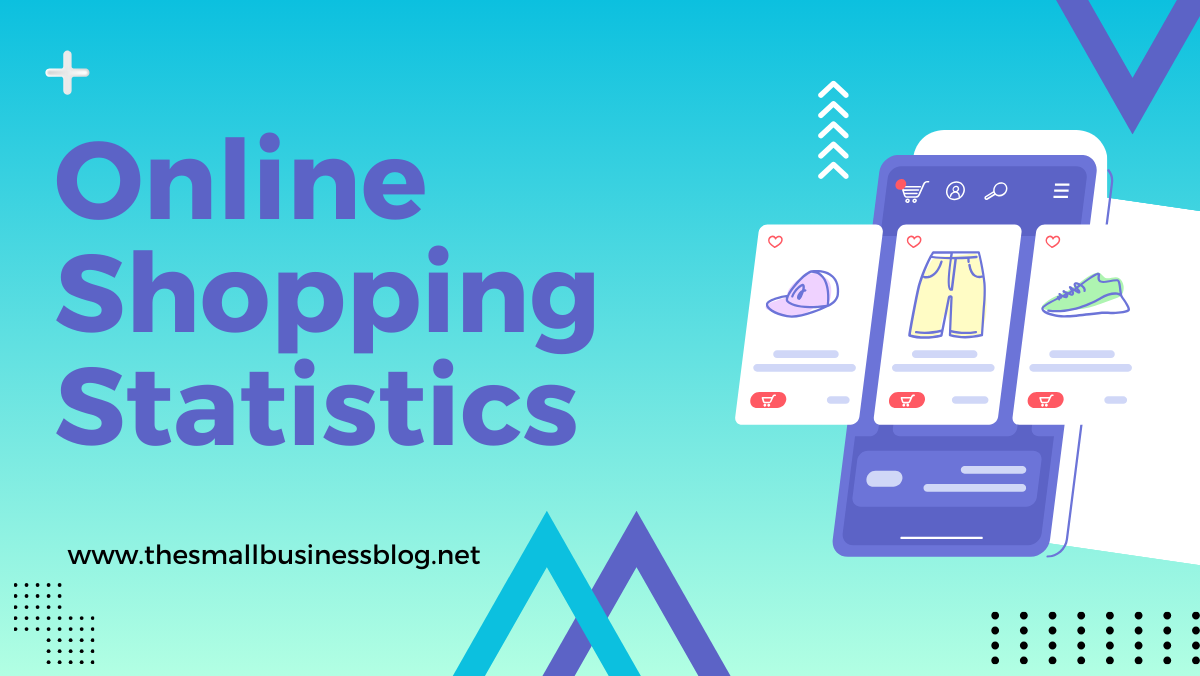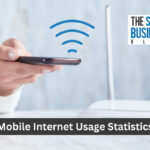The internet is everywhere and used for everything.
You probably checked something online within 15 minutes of getting up.
Going online is easy, you just pick up your smartphone and click on the relevant app.
You can check emails, social media, or even play a game online, all within seconds.
The fear of missing out drives people to constantly check their phones.
That’s why five billion people in the world are online, and the number is still rising.
However, while more people now access the internet via a mobile device than a desktop, it’s worth taking a look at the latest online shopping statistics.
The ease of internet access, combined with digital wallets, would suggest that more people shop online than ever before.
After all, you simply need to open the webpage or app, select a product, log into your account, and pay.
It’s convenient, can be done at any time, and gives you access to a wider range of goods than conventional shopping in physical brick and mortar stores.
Of course, shopping online also encompasses reading reviews and comparing products to ensure you make the right decision.
It almost seems pointless having physical stores anymore, until you read the following statistics.
Post Contents
- 1 Key Statistics
- 2 Top Online Shopping Statistics in 2024
- 2.1 1. 72% Of Women Shop Online
- 2.2 2. There Are Approximately 24 Million eCommerce Stores In The World
- 2.3 3. 65% Of Consumers Compare Products And Prices Online
- 2.4 4. 48% Of Abandoned Carts Are Due To Extra Costs
- 2.5 5. 47% Of Online Shoppers Are Happy To Use Chatbots
- 2.6 6. The Average Spend Per American On Black Friday And Cyber Monday Is $430
- 2.7 7. Generation Z Will Drive An Increase In Online Shopping
- 2.8 8. 20% Of All Global Retail Sales Are Online
- 2.9 9. An Estimated 2.14 Billion People Shop Online
- 2.10 10. 63% Of Sales Start Online
- 2.11 11. Taobao Is The Largest Online Marketplace
- 2.12 12. 49% Of Online Shoppers Use Digital Wallets
- 2.13 13. 75% Of Search Queries Are New
- 2.14 14. 56% Of Online Shoppers Do So For The Home Delivery
- 2.15 15. 41% Of Online Shoppers Buy Because of A Positive Review
- 3 Summing Up
- 4 Sources
Key Statistics
- 72% of women shop online
- There are approximately 24 million ecommerce stores in the world
- 65% of consumers compare products and prices online
- 48% of abandoned carts are due to extra costs
- 47% of online shoppers are happy to use chatbots
- The average spend per american on Black Friday and Cyber Monday is $430
- Generation Z will drive an increase in online shopping
- 20% of all global retail sales are online
- An estimated 2.14 billion people shop online
- 63% of sales start online
- Taobao is the largest online marketplace
- 49% of online shoppers use digital wallets
- 75% of search queries are new
- 56% of online shoppers do so for the home delivery
- 41% of online shoppers buy because of a positive review
Top Online Shopping Statistics in 2024
1. 72% Of Women Shop Online

A recent survey of online shoppers by Statista found that 72% of women shop online.
Men follow closely behind with 68% of all men shopping online.
Of course, there is a big difference in what men and women shop for.
40% of women shop for clothes and sports goods online, 23% of them look for books, magazines, and learning material, and 14% buy food and groceries online.
It’s worth noting 8% of women also shop for medicine online.
In contrast, 39% of men shop for computers and tech items.
This is closely followed by 37% of men looking at holidays, and 32% looking for household items.
Surprisingly, 27% of men buy event tickets online and 22% purchase films and music.
Men seem to prefer to shop for luxuries online, women focus on more basic needs.
(Statista)
2. There Are Approximately 24 Million eCommerce Stores In The World
It can be easy for any business to think they have missed the boat on online shopping.
After all, it’s dominated by industry giants such as Amazon, Walmart, and even Alibaba.
However, with approximately 24 million eCommerce stores online, and most of them are small players, there is always room for more.
In fact, now is the perfect time to launch an eCommerce store and find your own niche.
As online shopping continues to grow in popularity you’ll benefit.
In fact, you can look at it the other way, if you don’t create your eCommerce store today you’re likely to miss out on a lot of business.
If you do add to the number of existing eCommerce stores make sure your site is easy to use and all policies are easy to find.
It’s estimated that a poor, slow, or hard to find returns policy prevents 80% of visitors from purchasing!
(wpforms)
3. 65% Of Consumers Compare Products And Prices Online
Although your smartphone is a convenient way to shop online and this approach is gaining in popularity, it’s still not the preferred method for many people.
Instead, recent research has shown that 65% of shoppers will use their mobile device to check the quality of a product, compare prices to other suppliers, and check availability.
Interestingly, this 65% of shoppers will then purchase the item in a physical store, simply using the internet to help them research the best deal.
Just because people aren’t buying yet via their mobiles, doesn’t mean they aren’t important.
In the US only, mobile online shoppers are expected to reach 187 million within the next year.
You need to ensure your site is ready for mobile visitors.
If they find your site helpful and easy to use there is a high probability theory will purchase directly from you in the future.
It’s worth noting, 51% of shoppers have changed their chosen supplier after reading online reviews.
If you have a good mobile site you’ll be the store they change to.
(kpmg)
4. 48% Of Abandoned Carts Are Due To Extra Costs
The abandonment rate for mobile shoppers is as high as 85%.
That means, 85% of shopping carts will be left and the items never paid for.
That’s a staggering figure and reflects the fact physical stores are still valued.
One of the biggest reasons for abandonment is additional costs, this causes nearly half of all abandonments.
Additional costs are things such as tax, delivery charges, or packing charges.
If these charges are not listed until a consumer heads to the checkout, they are likely to cancel their purchase.
Part of this is it transforms the cost of a product, potentially making it cheaper to head in-store.
It’s also because the business hasn’t been upfront and honest with the consumer.
An unpleasant surprise at checkout will cause half of people to abandon their shopping.
It costs eCommerce businesses an estimated $3 billion a year.
A further 22% of people will abandon their cart if the delivery time is long and 24% abandon when they have to create an account before purchasing.
There should always be an option to buy without an account.
You should note, if carts are abandoned you can send a follow-up email.
45% of these will be opened and 21% of the emails will result in the consumer returning to the basket.
Add in a discount on the goods and 54% of shoppers will then decide to buy.
(Statista)
5. 47% Of Online Shoppers Are Happy To Use Chatbots
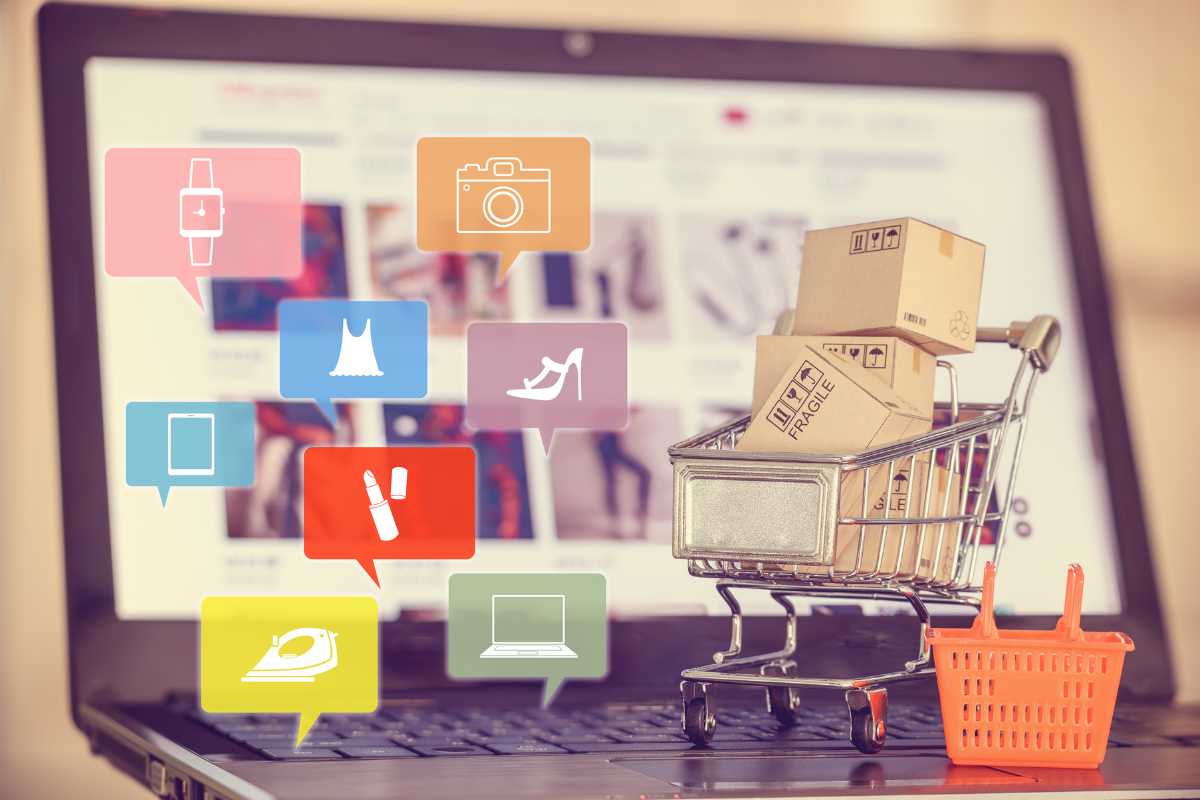
People generally have strong opinions about chatbots, the automated assistants you find on many websites.
In general, these assistants are not using AI, they are simply preprogrammed with responses to help you as much as possible.
They are becoming more accepted as 47% of online shoppers are now open to using a chatbot.
The main reason for this is speed. A chatbot will respond almost instantly.
Contacting a customer support rep means you can get a reply anywhere between instantly and next week.
Of course, this figure will only improve if chatbots continue to be helpful.
That means they need as much information as possible to simplify the process.
Chatbots aren’t the only popular option. 20% of Google searches are performed via a voice assistant.
Online stores need to be able to offer the same service, ideally via voice chat.
(marketingdive)
6. The Average Spend Per American On Black Friday And Cyber Monday Is $430
Black Friday started many years ago in Philadelphia.
Today, it’s been adopted across the US and many other parts of the world.
Both Black Friday and Cyber Monday represent excellent opportunities for consumers to get discounted goods.
These two special offer days are the busiest shopping days of the year. It’s estimated that 155 Americans purchased something over these two days.
That’s nearly half the US population.
According to the latest research, the average spend per person on these days is $430.
When you consider how many people are shopping you’ll quickly realize how many billions of dollars are spent in one day.
Millennials are one of the biggest online shoppers on Black Friday and Cyber Monday.
The latest survey shows that 93% of Millenials, aged between 24-35, will be shopping online during this period. They spend an average of $419 per person.
Nearly $9 billion of online sales were recorded last Black Friday and Cyber Monday.
It’s estimated that 50% of people stay at home to shop on this discount weekend.
In fact, the records show 53% of all sales that weekend came from mobile devices.
(Zippia)
7. Generation Z Will Drive An Increase In Online Shopping
Generation Z refers to people born in the late 1990s and onward.
They are the first generation to be brought up with digital technology and no real knowledge of life without the internet.
Much of this generation is now ready to spend and 95% of Generation Z have smartphones and are ready to shop online.
Statistics suggest they already spend an average of 10 hours online daily.
As Generation Z increases its buying power they are likely to drive a surge in online shopping.
It’s estimated their buying power will be worth $44 billion.
In fact, 93% of parents of Generation Z already state that this generation is influencing their spending habits, including where to spend.
It’s not just online shopping, 85% of Generation Z are already using social media to check out and compare products.
All an eCommerce retailer needs is a well-designed mobile site and these researchers will become online purchasers.
(Forbes)
8. 20% Of All Global Retail Sales Are Online
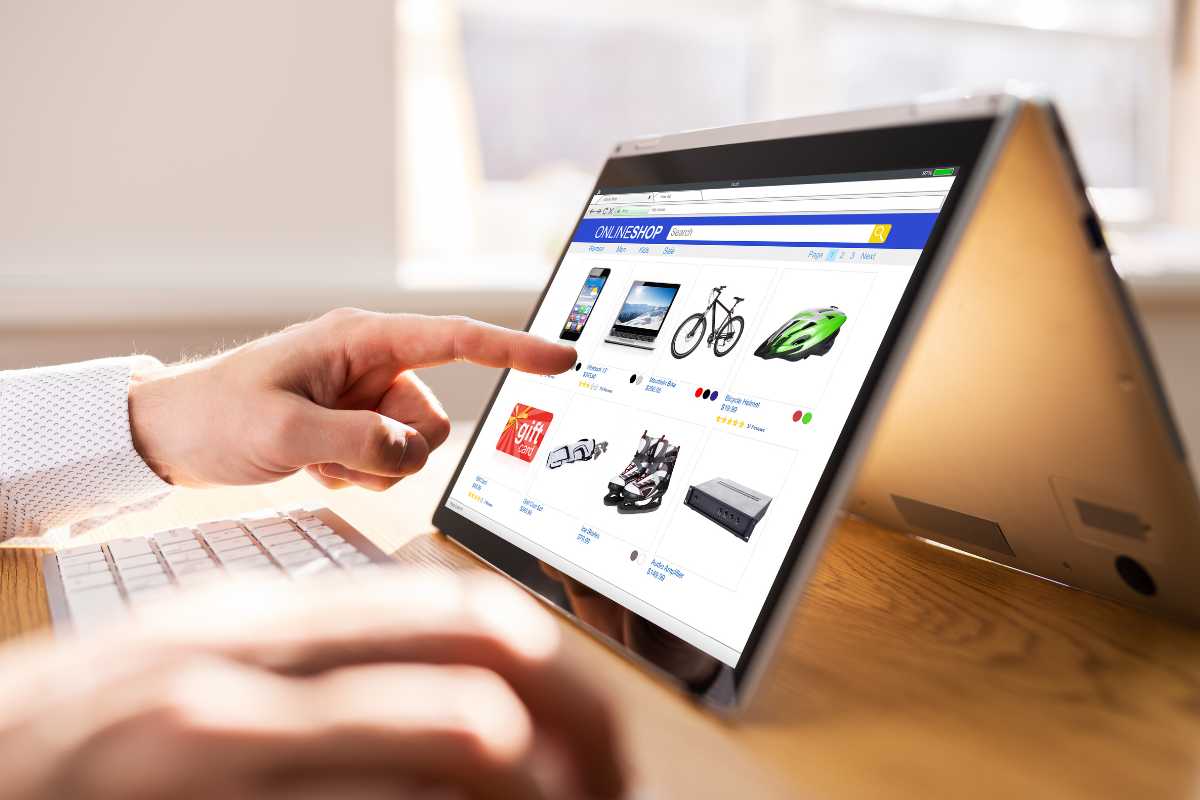
20% of all retail sales doesn’t sound like a huge percentage.
However, it hides a number of interesting facts. Firstly, that 20% represents $6 trillion worth of sales.
That’s a huge amount of money spent online and emphasizes the need for good online security protocols.
Interestingly, while the majority of countries are seeing an increase in online sales, according to CAGR, India is seeing the biggest and fastest increases.
To help put this 20% of sales in perspective it’s worth looking at past figures.
In 2000, online sales were 1% of retail sales. That’s quite impressive considering how new the internet was at that time.
By 2010, that figure had risen to 4.4% of total sales, and by 2015 it had reached 7.4%.
It didn’t reach double figures until 2019. The first quarter of 2019 saw online sales reach 10% of all retail sales.
By the middle of 2020 that figure had jumped to 16.5%.
Of course, the global pandemic affected this percentage. By the end of 2020 the figure was back to 15.1%.
Since then, it has continued to climb and, as of the second quarter 2023, online sales represent 20% of all retail sales.
Estimates suggest it could account for 50% of total sales within five years.
(Statista)
9. An Estimated 2.14 Billion People Shop Online
In 2021 global eCommerce sales were just short of $5 trillion, today that figure has grown to just over $6 trillion.
An Oberlo survey in 2021 estimated that 2.14 billion people had purchased at least one thing online during their lifetime.
That’s close to half of all the people with internet access.
Current estimates suggest the industry will continue to see rapid growth, hitting $7 trillion by 2025 and potentially three trillion people shopping online.
This increase is fueled by the convenience and practicality of shopping online.
It’s now possible not just to buy online, but to effortlessly compare products across eCommerce stores and make sure you’re getting the best deal.
Any eCommerce business hoping to capitalize via online shopping will need to ensure its site has everything the customer needs.
That means images, descriptions, clear pricing, and obvious lists of additional costs, if any.
(Oberlo)
10. 63% Of Sales Start Online
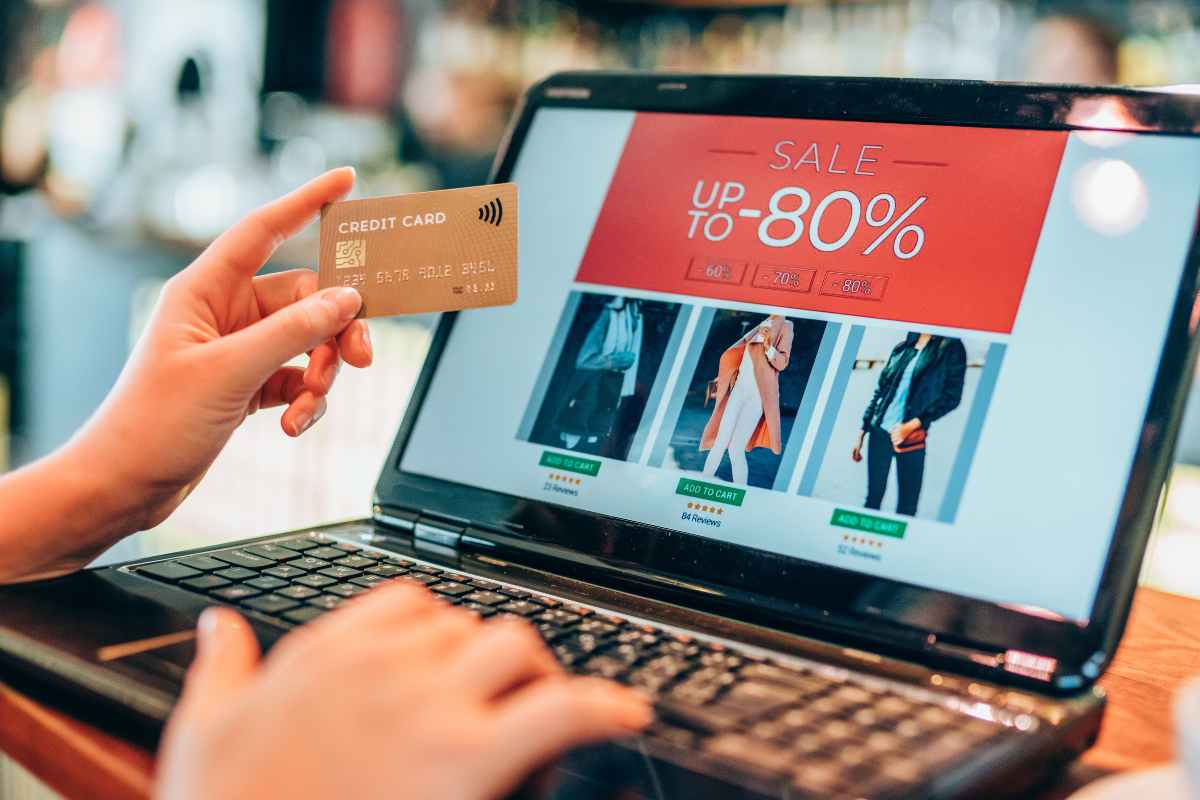
This is a testimony to the power of the internet and how accustomed people are to using it daily.
The latest figures by Thinkwithgoogle show that 63% of all shopping experiences, regardless of where the consumer ends up purchasing, start online.
In the majority of cases consumers start their shopping experience with Amazon or Google.
Once they’ve identified a product and read the reviews they will look at the best place to purchase.
This is when shipping and other additional costs can make a significant difference.
In many cases the final purchase price is equivalent or higher than purchasing in-store.
That’s why 63% of sales start online but only 50% of those finish online.
To get the customers to commit to an eCommerce purchase online stores need to adapt the purchasing process to meet customer expectations.
Of course, everyone has a different shopping experience.
The best way to secure new and repeat customers is to make the experience as personal as possible.
(Thinkwithgoogle)
11. Taobao Is The Largest Online Marketplace
The US generally dominates figures regarding economy, finance, and other entrepreneurial developments.
However, when it comes to the largest online marketplace, the award goes to China.
Taobao is a Chinese firm which, in 2021, had a GMV of $711 billion! In contrast, Amazon has a GMV of $390 billion, and they only take the third spot.
Tmall has the second spot with a $672 GMV. Both the top two are Chinese firms.
Fourth and fifth biggest online marketplaces are both taken by US firms. JD.com has a GMV of $244 billion, and eBay has an $87 billion GMV.
Of course, there are 1.4 billion people living in China and a comparatively small 330 million in the US.
That makes a significant contribution to the size of each marketplace.
(Statista)
12. 49% Of Online Shoppers Use Digital Wallets

Digital wallets have rapidly grown in popularity, especially in countries like the UK and the US.
This type of wallet allows you to add your bank cards and even PayPal and similar payment options.
All details are stored digitally and can be recalled in a moment.
The idea is that paying is easier and payment security is stronger.
The rapid growth is reflected in the number of people now using digital wallets.
The latest figures from WorldPay reveal 49% of online shoppers are using digital wallets to process transactions faster.
Credit cards, charge cards, and debit cards are still very popular options.
However, they are generally not as convenient as digital wallets.
It’s worth noting that digital wallets are also frequently used in physical stores.
Apple Pay and Google Pay are two of the most popular.
Users simply upload the relevant payment details to the app on their phones and then show the code on their phone to the appropriate reader in-store.
(WorldPay)
13. 75% Of Search Queries Are New
Online shoppers are a demanding bunch.
A recent Oberlo survey found that 75% of them expected to see new products on a regular basis.
In fact, this 75% of shoppers were so committed to finding new products that they created new search queries on consumer sites.
The result is 75% of queries have never been logged before!
Online shoppers are actively looking for new products which may interest them.
The same survey also found that 69% of shoppers felt it was important to see new products when they return to a site.
As an eCommerce business you’ll need to regularly update your stock list and rotate images on your welcome page.
It’s essential to connect with the customer and boost sales.
Don’t forget, the more customized the experience the better for the consumer.
That induces loyalty which can give your business the edge in a competitive online marketplace.
(Oberlo)
14. 56% Of Online Shoppers Do So For The Home Delivery
When ordering anything most people want to receive it the next day, ideally at home.
This makes online shopping simple and fun.
Next day delivery also means that something can be with you nearly as quickly as if you went to the local store.
A Statista survey found that 56% of online shoppers are influenced by next day delivery options.
If the eCommerce store offers this then consumers are more likely to purchase the item.
It’s more convenient than the hassle of heading to a store and dealing with all the crowds.
Of course, if the price is cheaper online, even with delivery, consumers are still likely to purchase online.
(Statista)
15. 41% Of Online Shoppers Buy Because of A Positive Review
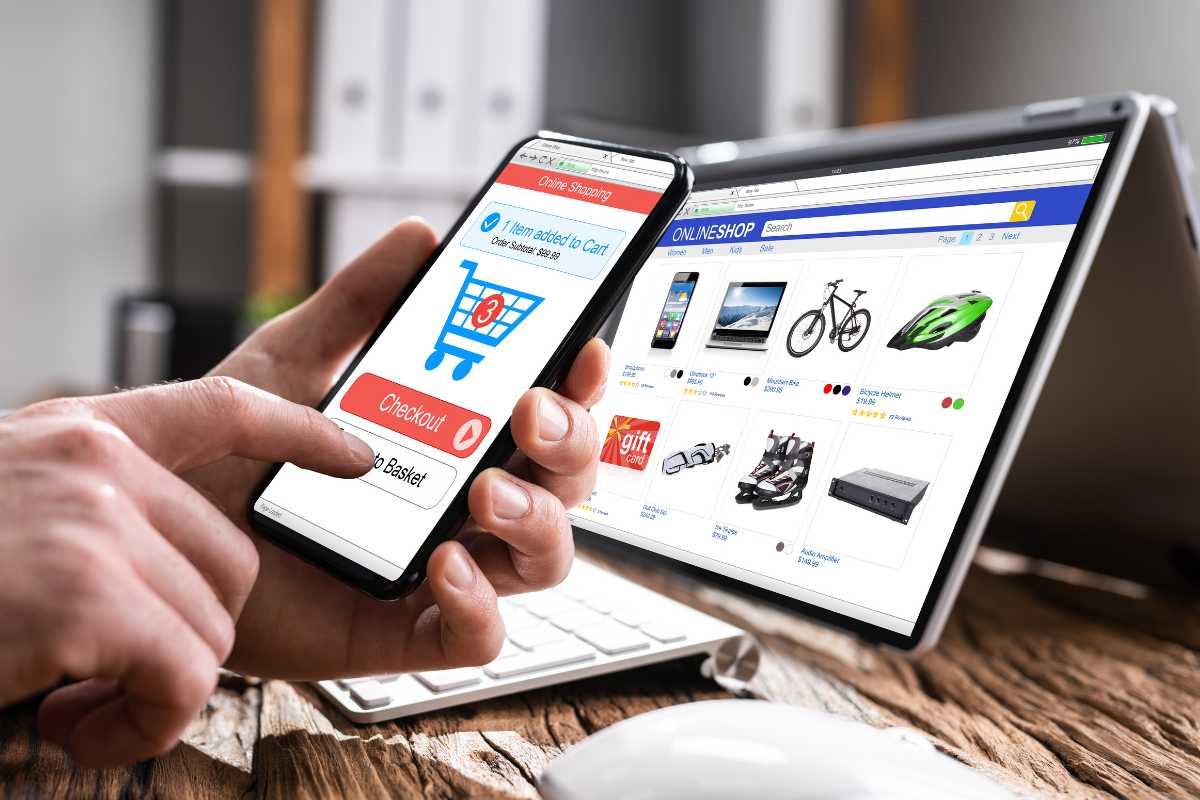
A recent report by GWI on 2022 shopping habits found that 41% of online shoppers were motivated to purchase a product from a specific supplier due to a review or reviews of the product.
Research shows that most people will trust a review on social media nearly as much as a review from a friend.
It’s worth noting that 37% of online shoppers will choose a supplier if they have a simplified and fast checkout process.
Not everyone wants to sign up for, and create, an account.
Unsurprisingly, considering the modern world’s fixation in instant gratification, 35% of online consumers are persuaded to buy thanks to the availability of next-day delivery.
(gwi.com)
Summing Up
The online shopping statistics paint a very clear picture.
It’s an industry that has seen rapid growth in the last few years and is likely to continue growing.
While eCommerce is becoming increasingly competitive, there is still plenty of room for new businesses. If you’re running a business and aren’t online yet, you need to start offering online sales.
The simple truth is the above statistics are vital to any business trying to crack the eCommerce market.
It’s important to understand how each statistic will affect the shopping experience for your customers and make sure it’s a positive one.
In summary, by simply paying attention to what shopping experience your customers like you can create an online shop that attracts customers and persuades them to shop online with you.
As a business owner, you have nothing to lose and a lot to gain when you embrace online shopping.







